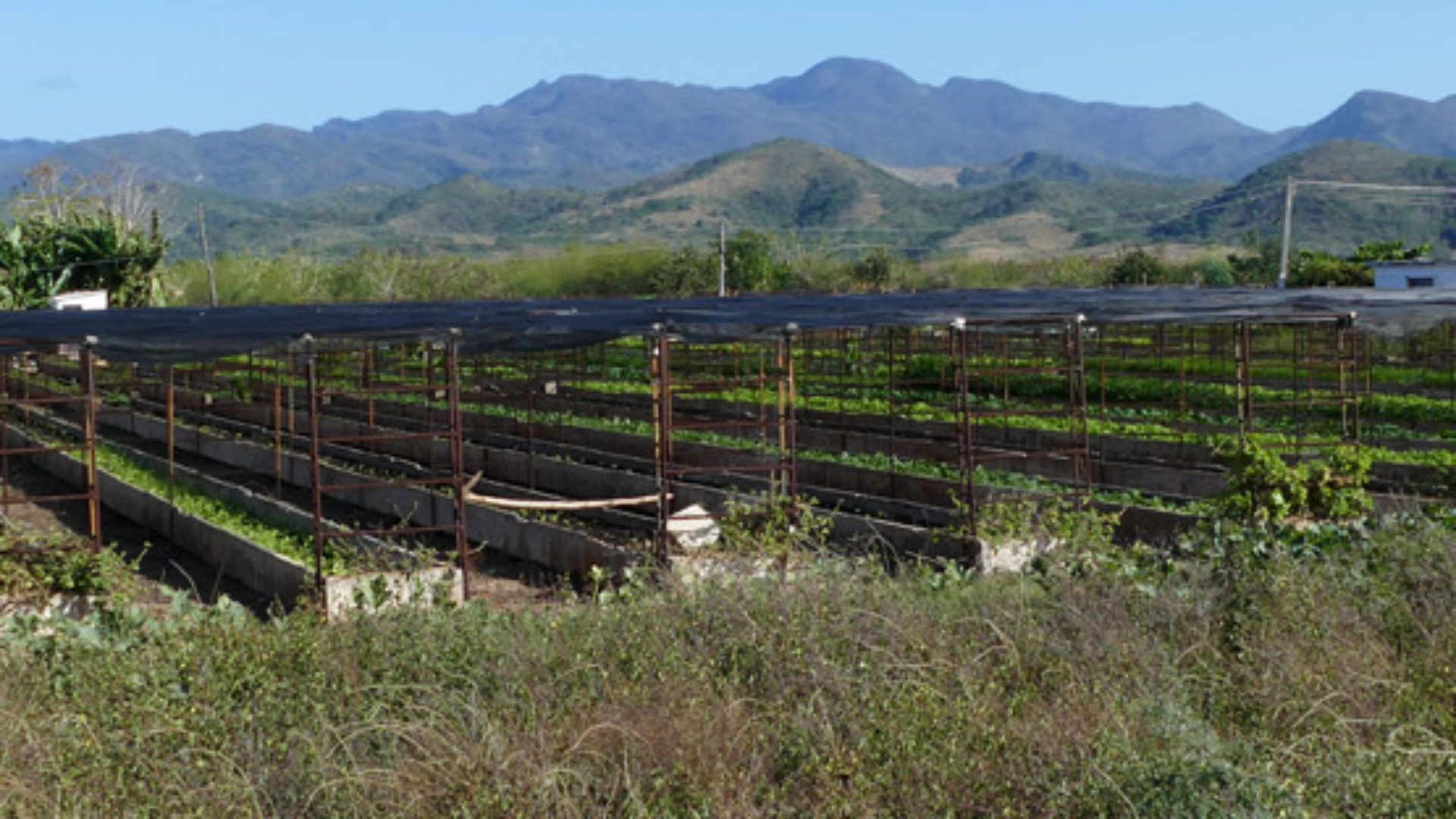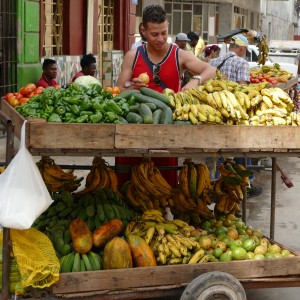
Fruit and vegetable stalls are on almost every corner in Havana
We were over in Cuba a couple of weeks ago. This trip had been planned for years, but has only recently come to fruition. As it turned out the timing was interesting to say the least. We were there just before Obama’s ground-breaking visit (and that of the Stones). One might argue that Cuba is on the cusp of change, and I am sure the history books will mark Obama’s visit as the great change point, but the truth is that change has been happening at a remarkable rate for the last few years. The alterations brought about by Raoul Castro in 2010 onwards, such as deregulation of farmers markets and allowing home-run restaurants and guest houses to open are the most obvious manifestations of these changes to a visitor. The Cuban government is trying to pull off a difficult balancing act of maintaining ‘democratic socialism’ whilst allowing inward investment and motivating private enterprise by allowing individuals to keep profits. One can argue about the degree of democracy of course, but there is no doubt that broadly speaking the system has popular support.

These sort of out-of-town organic farms were established in Cuba during the special period and are still fairly common
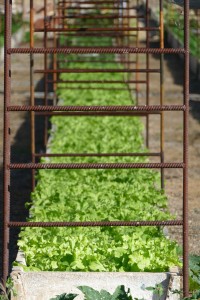
Built from raised concrete beds and re-inforcement steel to support shading, they are a simple solution to a production problem.
Around twenty-five years ago, Cuba entered what is known as its ‘Special Period’. Following the collapse of the Soviet Union, the cheap oil for sugar deals that Cuba had benefitted from came to an end. At the same time, the world oil price rose sharply. The country lost approximately 80% of its imports, 80% of its exports and its Gross Domestic Product dropped by 34%. This caused major hardships for the population and a considerable rethink in the way Society operated, particularly with regards to energy policy and agriculture, as oil, pesticides and chemical fertilisers became unavailable. Australian and other permaculturists arriving in Cuba at the time began to distribute aid and taught their techniques to locals, who soon implemented them in Cuban fields, raised beds, and urban rooftops across the nation. Organic agriculture was soon after mandated by the Cuban government, supplanting the old industrialized form of agriculture Cubans had grown accustomed to. This is all well documented and probably well-known to many of the readers of this blog. And up until around 2008 or so, the system remained in place. One of the most interesting and unusual characteristics of the Cuban agricultural revolution was the widespread dispersed urban agriculture movement. Any free space became a food-growing resource – courtyards, rooftops, empty public and private plots were all turned over to communally cultivated fruit and vegetable plots. Check out this article from the Guardian almost exactly eight years ago for an interesting snap shot of where the country was in 2008. Oil and commodity prices were high and rising, the US blockade was still in full force (although the cracks were beginning to appear).
We went to Cuba expecting to see many ‘Organoponicas’ as they are known. However, over the last six years or so, a combination of lower oil prices and higher personal incomes has had some interesting side effects. The rise in roadside markets (on almost every other street corner in some areas) and the falling cost of growing food, coupled with more money in people’s pockets has meant that many of the smaller unorganised urban agriculture projects have foundered. Others are threatened by development although many of the larger ones survive. I guess this shouldn’t really be a surprise, although to many starry-eyed western permaculturists it may come as a bit of a shock. I suppose the real surprise is why they thought that Cubans were really any different from anyone else. After all, if you have spent ten hours at work, why would you want to stop by the community garden to tend the vegetables when you could buy them cheaply at the corner stall on your way home. Unless you wanted to that is. Because like anywhere else, there is a significant minority of the population that are motivated and interested growing things, but it is a minority. The legacy of the special period in Cuba has meant that unlike other countries there is an understanding of and skill-set in organic horticulture.
As well as Terrazas (a well known sustainable settlement dating from the late 1960s), we also visited a number of smaller local Organoponicas in Havana that have survived. Some of these visits were by arrangement and others just be looking over the fence!
So where does this leave Cuba and where does it leave permaculture? Well, the answer is certainly in a better place than it was before the agricultural revolution. But in the end it should be obvious that given the chance, people will specialise in what they do best and enjoy. That after all is how cities and indeed civilisation work.
As far as horticulture goes, our trip was exciting as we had expected as well as being interesting in unexpected ways. Plus we got to hear some really good music and drink a few knock-out mojitos.
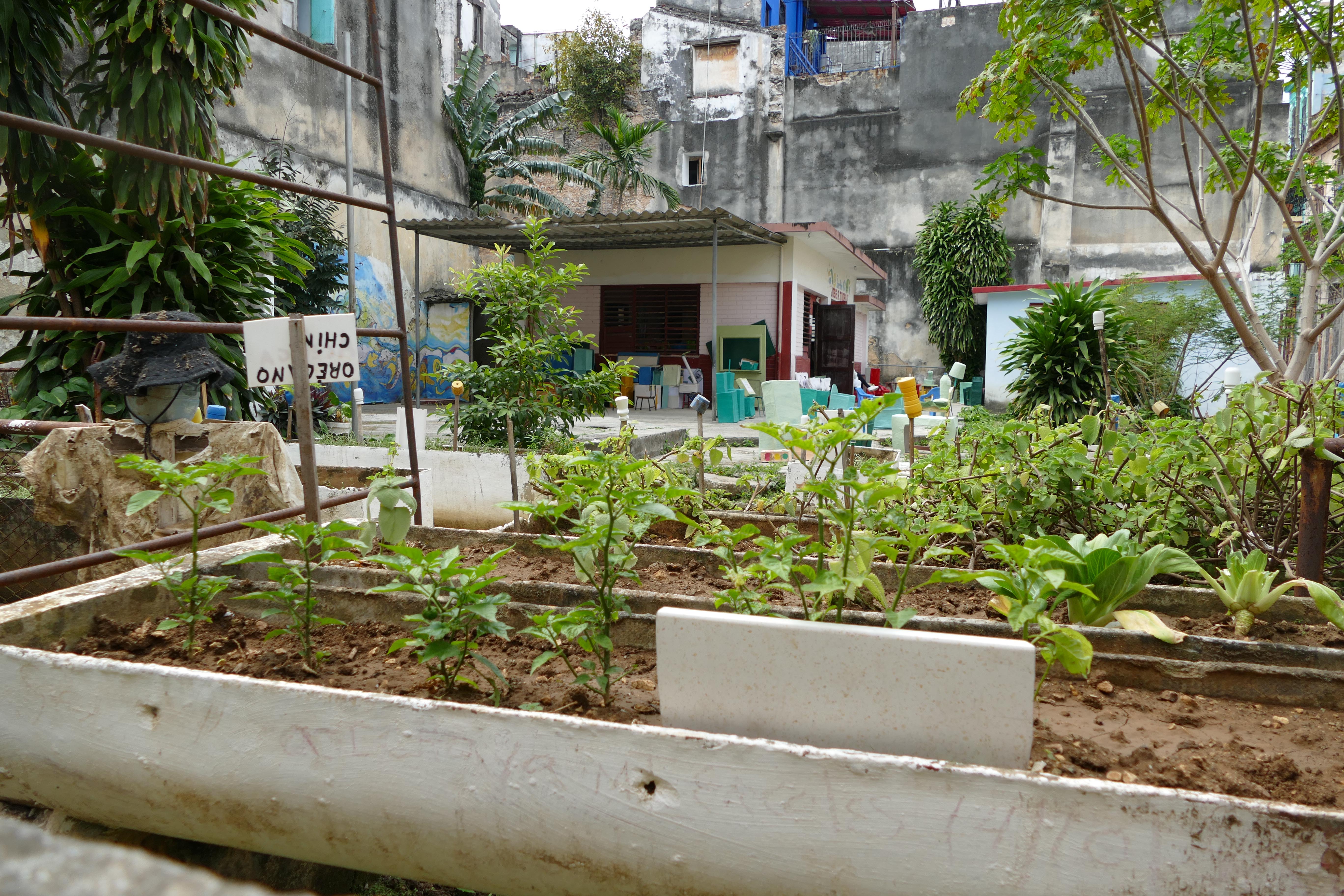
Urban Havana School garden
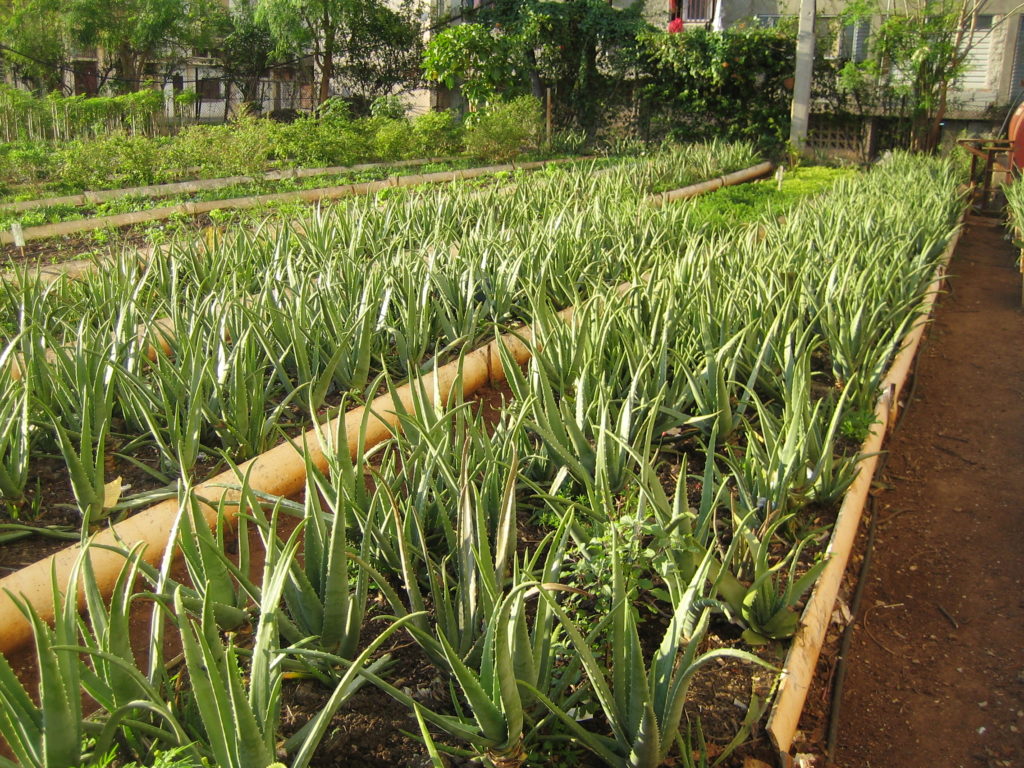
These Aloe are grown for medicinal purposes in this Central Havana Organoponica. Plant based medicines are common in Cuba.
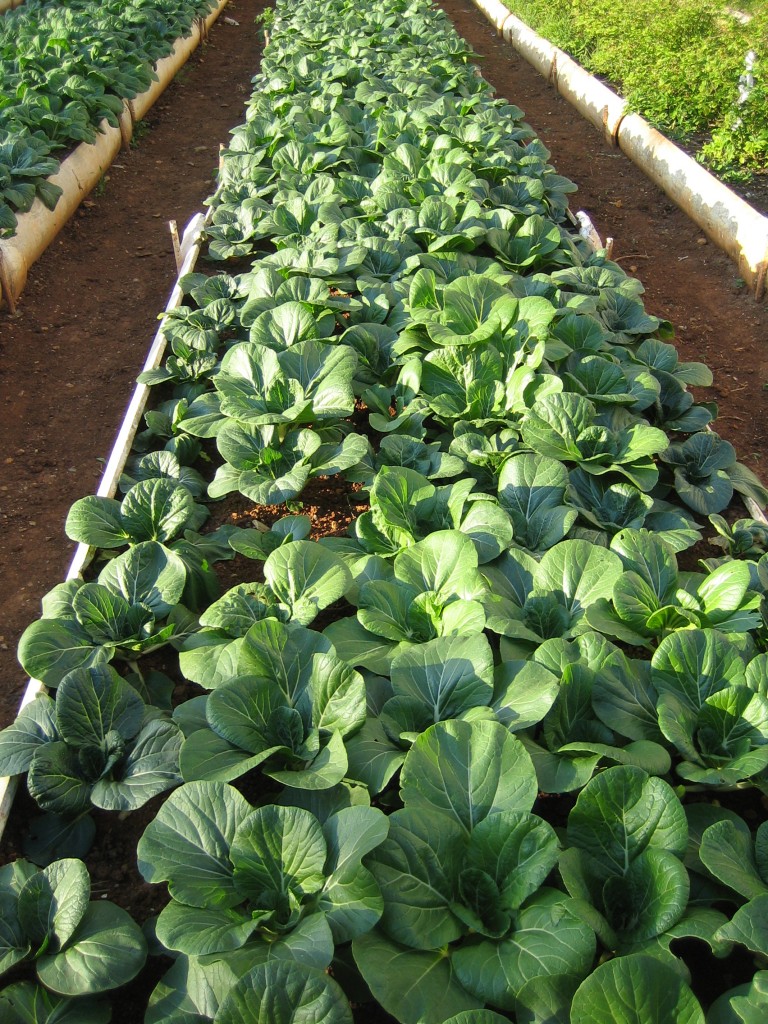
Salad crops grown in a central Havana organic garden. Note the simple raised beds made of concrete channels.
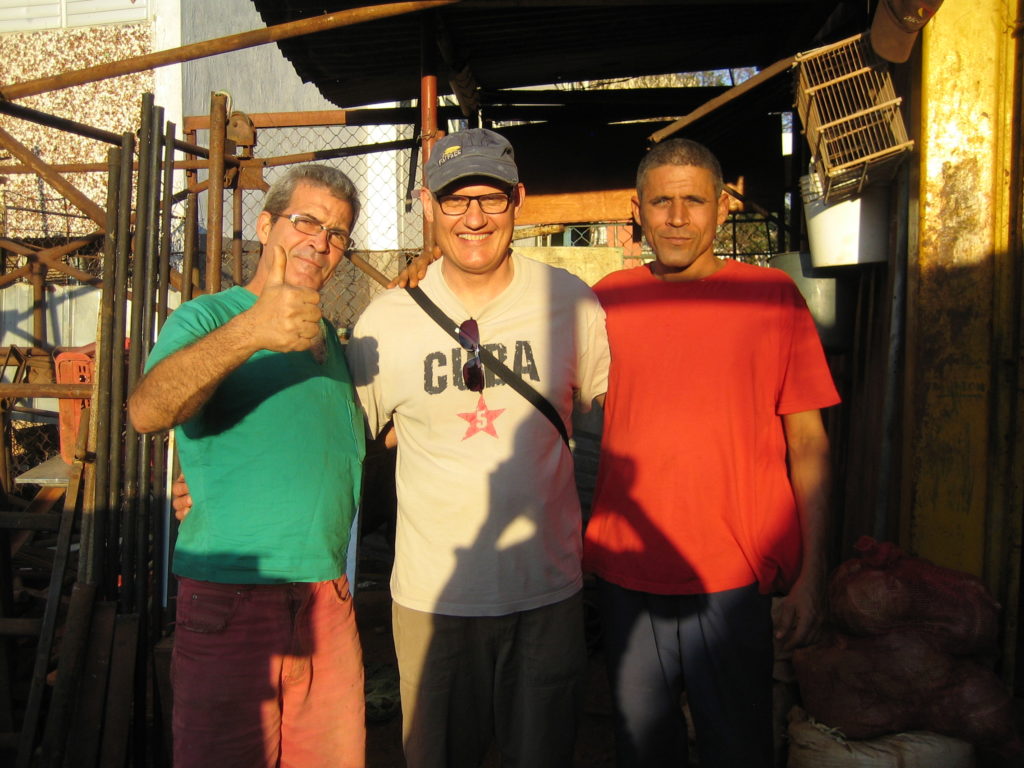
These guys were really keen to show us around. Spot the tourist!

